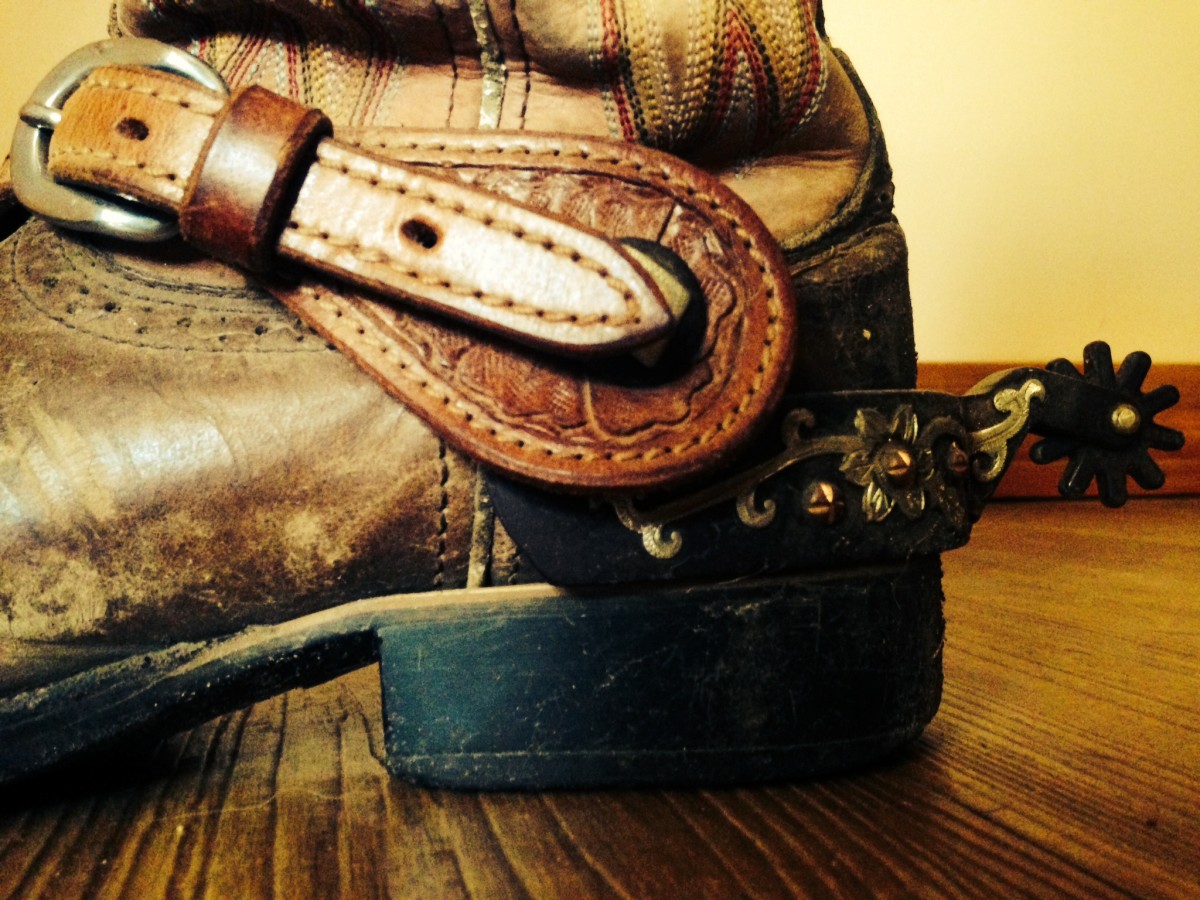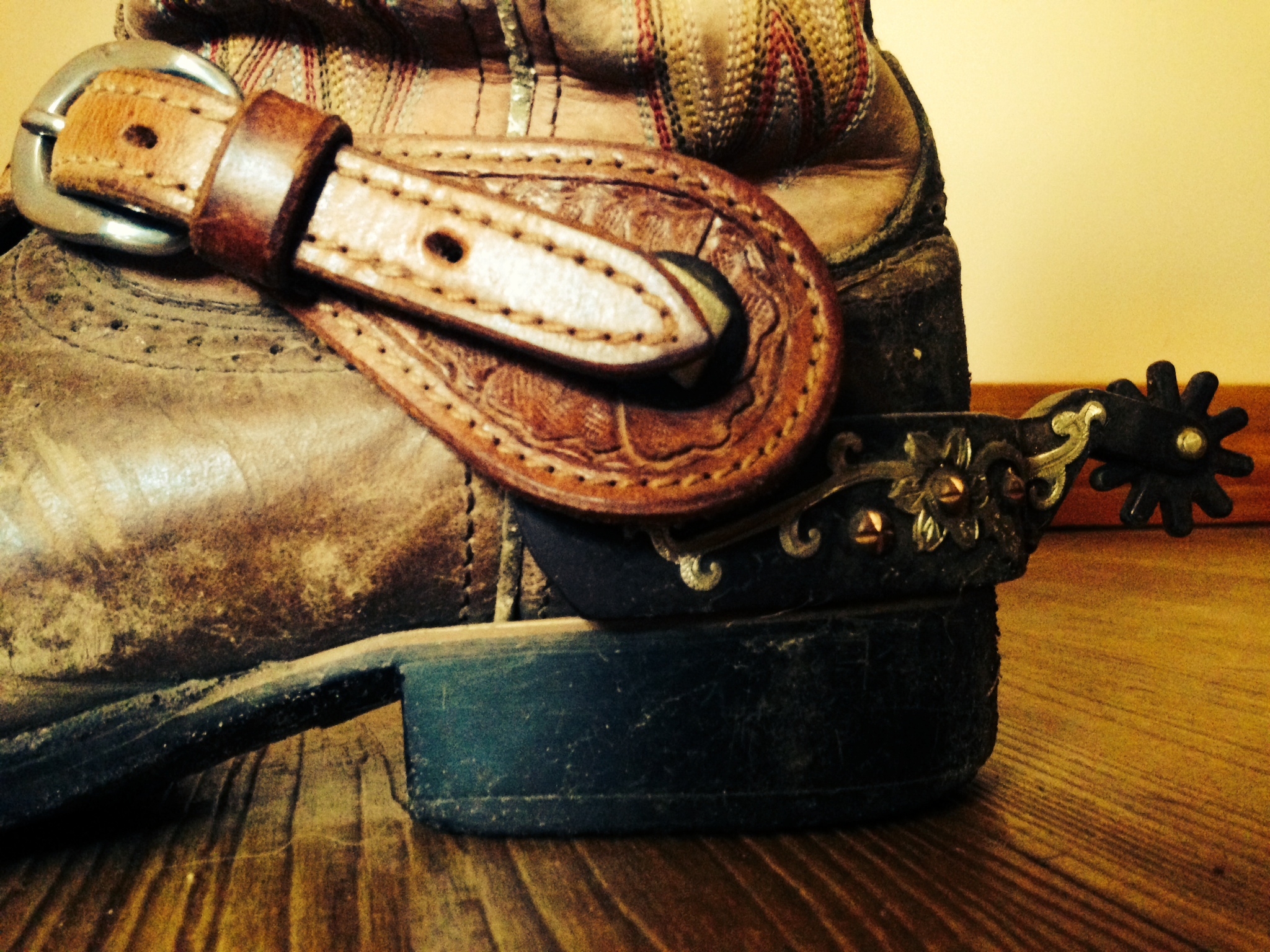
The use of spurs has been a debated question for years and, with the turn to a more natural way of horsemanship, has raised several eyes these days. Spurs were used as far back as the 5th Century and have changed little in appearance or style. The first spur carried a single point on the end and later on, by the 15th Century, was replaced by a rowel. Initially, they carried a more knightly role rather than an aid for persuasion to the horse.
Today’s spur is made up of three basic parts: the neck, heel band and the rowel. Design can be as simple or decorative as one’s imagination, keeping in mind the intended use. Rowels can be as simple as a rounded blunt end, to several points sharpened to a fine tip. Styles can vary depending on the type of riding one does—dressage, hunters, barrel racing, cutting, reining, western pleasure , and even the trail rider.
If you ask someone’s opinion on the proper use, as well as type, of spurs you will get many answers. I will try to share with you my thoughts, as well the thoughts of many respected horsemen and horsewomen.
First, let’s look at the spur as another aid we might use along with a crop, tie-down, martingale, and different bits. They’re all used to aid us in controlling our horse or relaying our desires to the horse. I’ll speak from this point on from my view in the use of the spur.
First and foremost, I do not use a spur on a young horse to relay my desire until he is well under saddle. As with all our training methods, we want to build the confidence and try in the horse using our steps of suggest, ask, and tell. If I’ve done my job correctly, we very seldom have to tell. Usually at month three, we may move to the spur to give ourselves a more precise location in where we place our heel to ask something of the horse.
Imagine the horse’s side is divided into three sections. We can press each different section to identify what part we want him to yield— the shoulder, barrel, or hip. In the beginning, we might cue from the extremes of the areas to help him understand. As an example, if we want the horse to move his shoulder, we’d put pressure in front of the girth; to move his hip, put pressure on the flank; his barrel, put pressure on his barrel directly by the calf as it hangs naturally. As he begins to understand and these points of direction come closer together, we can simply cue within an area of 2-3 inches to cover all three parts. That’s where the spur can really help out with less movement and a much slighter suggestion.
As I watch many riders, I’ve seen everything from the slightest touch of the spur to the stab as the first suggestion. No calf, Achilles, or side of the heel, even! Just the ram of the spur from the start. If we want our horse to respect and respond to the spur rather than react to the spur try this. Ask with your calf, then squeeze. If you get no response, try the Achilles, followed by the side of the heel. Stay all in a vertical line along the horse’s side. No response? Then it’s time to use the spur. Touch the rowel to his side. Look for a reaction. If he moves at all he is looking for the proper response. Wait and help him find it without elevating the cue. Still no response? Now press in with moderate pressure, say 1-2 pounds. If you get no response, try rolling the rowel up his side. Be careful here as this is the point where he may start looking quickly. As soon as you get the response, release.
As a last resort you can try bumping lightly with the tip of the spur. Remember though, this is the same as someone poking you in the side with a pin! Now try again, starting with the calf and advance your cue until you get a response. In no time, you will have your horse responding with the leg aid rather than the spur.
I never use the spur on a lazy horse to get forward movement, only lateral. My forward movement should come from my seat. If I need more, I will use my mecate or crop as a burst of energy across his shoulders or him. Many riders will teach the horse to collect or frame up using the spur as a very light lift of the barrel. I may use my calf or a lightly a spur touch to help the horse keep in rhythm as I ask him to back. Left, right, left, right. Very lightly, though, as this may many times cause him to step of to the side.
Be careful that you or your horse do not become dependant on the spur. If you have to use your spur every time you ask something, you need to go back to the basics and teach him to respond to the more subtle cue. With every cue we need to release every time we get the proper response. Even when I ask a horse to continue to give me lateral movement my release will come at every step, then reapply. Don’t dwell on your horse’s side.
Spurs should never be used inhumanely. True horsemanship can be explained as simple as setting my horse up to give me the response that I’m looking for. If it doesn’t happen as you planned, change your plan, not your attitude. Positive results come from positive request!
I’ve learned that the only time I always need my spur is to keep my chaps from dragging the ground as I walk!
Keep training with a goal!

